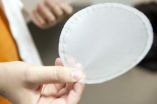Philadelphia, October 23 Pediatricians and researchers at The Children's Hospital of Philadelphia's(CHOP) have developed a first-of-its kind tool to help parents and health care providers better treat ADHD (attention deficit-hyperactivity disorder). The new, three-part survey helps steer families and doctors toward "shared decision-making", an approach proven to improve healthcare results in adults, but not widely used in pediatric settings. The results of the CHOP study are published in the journal Academic Pediatrics.
"Shared decision-making in health care means that doctors and families make decisions together. Doctors contribute their professional knowledge, and families weigh their values and personal experience," explained lead author Alexander Fiks, M.D., M.S.C.E, an urban primary care pediatrician at CHOP and a faculty member at CHOP's PolicyLab. "We chose to focus on ADHD for this study, because it is a relatively common diagnosis with two recommended treatment options – prescription medication and behavioral therapy – that require the family to make decisions about what will work best for them. Choosing a treatment that doesn't 'fit' can lead to unsuccessful results. We wanted to see if we could create a tool to help guide families and physicians through this process."
According to a study published earlier this year, the number of physician outpatient visits in which ADHD was diagnosed in children under age 18 was 10.4 million. Psychostimulants were used in 87 percent of treatments prescribed during those visits.
The CHOP study involved 237 parents of children aged 6-12 who were diagnosed with ADHD within the past 18 months. Using a combination of parent interviews, current research, and input from parent advocates and professional experts, researchers developed a standardized three-part questionnaire to help parents define and prioritize their goals for treatment; attitudes toward medication; and comfort with behavioral therapies. The completed survey serves as a guide to support families and health care providers to reach the most effective and workable treatment for a child's ADHD.
"It's important to know whether a parent's primary goal is to keep a child from getting in trouble at school, improve academic performance, or maintain more peace with family members or peers," said Fiks. "We also need to learn about the family's lifestyle and attitudes toward behavioral therapy and medication. All of these factor into making the best treatment decision for each individual child and family."
Pediatric care providers do not usually use shared decision making to gauge families' preferences and treatment goals for ADHD. The Institute of Medicine and the American Academy of Pediatrics recommend healthcare providers use shared decision-making to help families select the best treatment option for ADHD. A well-designed questionnaire may help both patient-families and providers to feel more satisfied with their child's ADHD treatment. The researchers say this is a promising model for more widespread use to aid with treatment decisions for children with ADHD and, in the future, could be tailored for use with other medical conditions.
Until the approach is more widely adopted, Fiks and his colleagues recommend parents ask themselves a few questions to help get the most out of their office visit:
What do you and your child want to achieve as a result of ADHD treatment? (Better behavior or better grades at school? More self-control at home? Less teasing by other kids?)
Consider your attitudes and your family's attitudes about medication and behavioral therapy, and why they may or may not be right for you. Write down any questions you have about these treatment options to help remind you during your appointment.
"For the pediatrician's part, it is our responsibility to fully inform parents about their options for treating ADHD and to seek guidance from families about which options will best meet their treatment goals and be manageable for their lifestyle. Research shows that patients adhere much better to the treatment options that they are comfortable with and that are the most practical for them. We need to make sure we're asking the right questions," said Fiks, who is also co-medical director of CHOP's Pediatric Research Consortium.
###CHOP is among the first pediatric research institutions to explore how to adapt the philosophy of shared decision-making to a pediatric setting and make it a standard of care. To learn more about PolicyLab's work in this area, visit http://policylab.us/index.php/research-and-policy/health-services-research.html.
About PolicyLab at The Children's Hospital of Philadelphia
PolicyLab develops evidence-based solutions for the most challenging health-related issues affecting children. PolicyLab engages in research that is both responsive to community needs and relevant to policy priorities, partnering with practitioners, policymakers, and families throughout the research process. Through its work, PolicyLab identifies the programs, practices, and policies that support the best outcomes for children and their families, disseminating its findings beyond research and academic communities as part of its commitment to transform evidence to action. www.research.chop.edu/PolicyLab
About The Children's Hospital of Philadelphia
About The Children's Hospital of Philadelphia: The Children's Hospital of Philadelphia was founded in 1855 as the nation's first pediatric hospital. Through its long-standing commitment to providing exceptional patient care, training new generations of pediatric healthcare professionals and pioneering major research initiatives, Children's Hospital has fostered many discoveries that have benefited children worldwide. Its pediatric research program is among the largest in the country, ranking third in National Institutes of Health funding. In addition, its unique family-centered care and public service programs have brought the 516-bed hospital recognition as a leading advocate for children and adolescents.
www.chop.edu.
Engaging parents leads to better treatments for children with adhd
CHOP tool helps parents identify values, priorities; Prompt doctors to ask helpful questions
2012-10-23
(Press-News.org)
ELSE PRESS RELEASES FROM THIS DATE:
Lubricants from vegetable oil
2012-10-23
Epoxides are highly reactive organic compounds comprised of a triple ring with two carbon atoms and one oxygen atom. Among other things, the chemicals industry uses them for the production of lubricants for vehicles and engines, as well as surfactants and emulsifiers for detergents and cleansers. Until now, epoxides have been based primarily on source materials procured from petroleum. Researchers at the Fraunhofer Institute for Interfacial Engineering and Biotechnology IGB have engineered a chemical-enzymatic process that now enables vegetable oil-based production, at ...
Neutron experiments give unprecedented look at quantum oscillations
2012-10-23
OAK RIDGE, Tenn., Oct. 23, 2012 -- Researchers at the Department of Energy's Oak Ridge National Laboratory have found that nitrogen atoms in the compound uranium nitride exhibit unexpected, distinct vibrations that form a nearly ideal realization of a physics textbook model known as the isotropic quantum harmonic oscillator.
In the experiment on the uranium nitride crystal -- with each of the light nitrogen atoms centered in a cage of heavier uranium atoms -- neutron scattering at ORNL's Spallation Neutron Source (SNS) revealed an unexpected series of distinct and evenly ...
Puppies don't pick up on yawns
2012-10-23
VIDEO:
Video clip shows puppy with familiar experimenter and unfamiliar experimenter.
Click here for more information.
Do you get tired when others yawn? Does your dog get tired when you yawn? New research from Lund University establishes that dogs catch yawns from humans. But not if the dogs are too young. The study, published in Springer's journal Animal Cognition, found that, like humans, dogs show a developmental trend in susceptibility to contagious yawning.
While dogs ...
Lifting weights protects against metabolic syndrome
2012-10-23
Philadelphia, Pa. (October 23, 2012) - People who lift weights are less likely to have metabolic syndrome—a cluster of risk factors linked to heart disease and diabetes, reports a study in the October issue of The Journal of Strength and Conditioning Research, official research journal of the National Strength and Conditioning Association (NSCA). The journal is published by Lippincott Williams & Wilkins, a part of Wolters Kluwer Health.
"Lifting weights may play a role in reducing the prevalence and risk of metabolic syndrome among U.S. adults," according to the study ...
Nanofibrillar cellulose film to ease performing medical tests
2012-10-23
Researchers at Aalto University in Finland have succeeded in developing a durable and affordable nanofibrillar cellulose film platform to support medical testing. New environmentally friendly, reliable nanofibrillar cellulose (NFC) platforms are more diverse than plastic films. New film can be made, for instance, hydrophobic, hydrophilic and the electric charge can be changed. This will enhance the possibility of conducting thousands of different medical tests at home or in physicians' receptions instead of waiting for results from laboratories.
A platform is coated with ...
Migratory birds can spread haemorrhagic fever
2012-10-23
A type of haemorrhagic fever that is prevalent in Africa, Asia, and the Balkans has begun to spread to new areas in southern Europe. Now Swedish researchers have shown that migratory birds carrying ticks are the possible source of contagion. The discovery is being published in the US journal Emerging Infectious Diseases.
Crimean-Congo Haemorrhagic fever is a serious disease that begins with influenza-like symptoms but can develop into a very serious condition with high mortality (30%). The disease occurs in Africa, Asia, and the Balkans but it has recently started to ...
Low adoption by large hospital ICUs of catheter-associated urinary tract infection precautions
2012-10-23
NEW YORK –Hospital size matters when it comes to intensive care units (ICUs) adopting even the most routine prevention policies for catheter-associated urinary tract infections (CAUTI), according to a new study from researchers at Columbia University School of Nursing, published this month in the American Journal of Infection Control. The study found that large hospitals -- those with more than 500 beds --had a 1.5 higher average rate of CAUTI than hospitals with 500 beds or less. Since larger hospitals, particularly teaching hospitals treat patients who are often sicker, ...
Tiny pores in graphene could give rise to membranes
2012-10-23
CAMBRIDGE, Mass. — Much has been made of graphene's exceptional qualities, from its ability to conduct heat and electricity better than any other material to its unparalleled strength: Worked into a composite material, graphene can repel bullets better than Kevlar. Previous research has also shown that pristine graphene — a microscopic sheet of carbon atoms arranged in a honeycomb pattern — is among the most impermeable materials ever discovered, making the substance ideal as a barrier film.
But the material may not be as impenetrable as scientists have thought. By engineering ...
Are schizophrenia and autism close relations?
2012-10-23
Autism Spectrum Disorders (ASD), a category that includes autism, Asperger Syndrome, and Pervasive Developmental Disorder, are characterized by difficulty with social interaction and communication, or repetitive behaviors. The U.S. Centers for Disease Control and Management says that one in 88 children in the US is somewhere on the Autism spectrum — an alarming ten-fold increase in the last four decades.
New research by Dr. Mark Weiser of Tel Aviv University's Sackler Faculty of Medicine and the Sheba Medical Center has revealed that ASD appears share a root cause with ...
NASA sees active region on the sun emit another flare
2012-10-23
VIDEO:
Video of the Oct. 22, 2012, solar flare as captured by NASA's Solar Dynamics Observatory in the 131 and 304 Angstrom wavelengths. LINK TO HIGHEST RESOLUTION VIDEO: ...
LAST 30 PRESS RELEASES:
New science reporting guide published for journalists in Bulgaria
New international study reveals major survival gaps among children with cancer
New science reporting guide published for journalists in Turkey
Scientists develop a smarter mRNA therapy that knows which cells to target
Neuroanatomy-informed brain–machine hybrid intelligence for robust acoustic target detection
Eight SwRI hydrogen projects funded by ENERGYWERX
The Lundquist Institute and its start-up company Vitalex Biosciences Announces Strategic Advancement of Second-Generation fungal Vaccine VXV-01 through Phase 1 Trials under $40 Million Competitive Con
Fine particles in pollution are associated with early signs of autoimmune disease
Review article | Towards a Global Ground-Based Earth Observatory (GGBEO): Leveraging existing systems and networks
Penn and UMich create world’s smallest programmable, autonomous robots
Cleveland researchers launch first major study to address ‘hidden performance killer’ in athletes
To connect across politics, try saying what you oppose
Modulating key interaction prevents virus from entering cells
Project explores barriers to NHS career progression facing international medical graduates
Jeonbuk National University researchers explore the impact of different seasonings on the flavor perception of Doenjang soup
Two Keck Medicine of USC Hospitals named Leapfrog Top Teaching Hospitals
World-first discovery uncovers how glioblastoma tumours dodge chemotherapy, potentially opening the door to new treatments
A fatal mix-up: How certain gut bacteria drive multiple sclerosis
New AI tool identifies not just genetic mutations, but the diseases they may cause
Deep-learning model predicts how fruit flies form, cell by cell
Combination pills for high blood pressure may simplify treatment, improve long-term health
Immune system keeps mucosal fungi in check
Neurons within the brain use simple rules to localize genetic messages
Electrodes created using light
Second-hand gift-giving is a well-deliberated decision
How human interaction drove evolution to make bears less aggressive
National Poll: Few parents offer teens guidance on healthy eating during holiday season
Cannabis derivatives could provide new ovarian cancer treatments
Raising strong yeast as a petroleum substitute
Clues to the origin of hot Jupiters hidden in their orbits
[Press-News.org] Engaging parents leads to better treatments for children with adhdCHOP tool helps parents identify values, priorities; Prompt doctors to ask helpful questions



